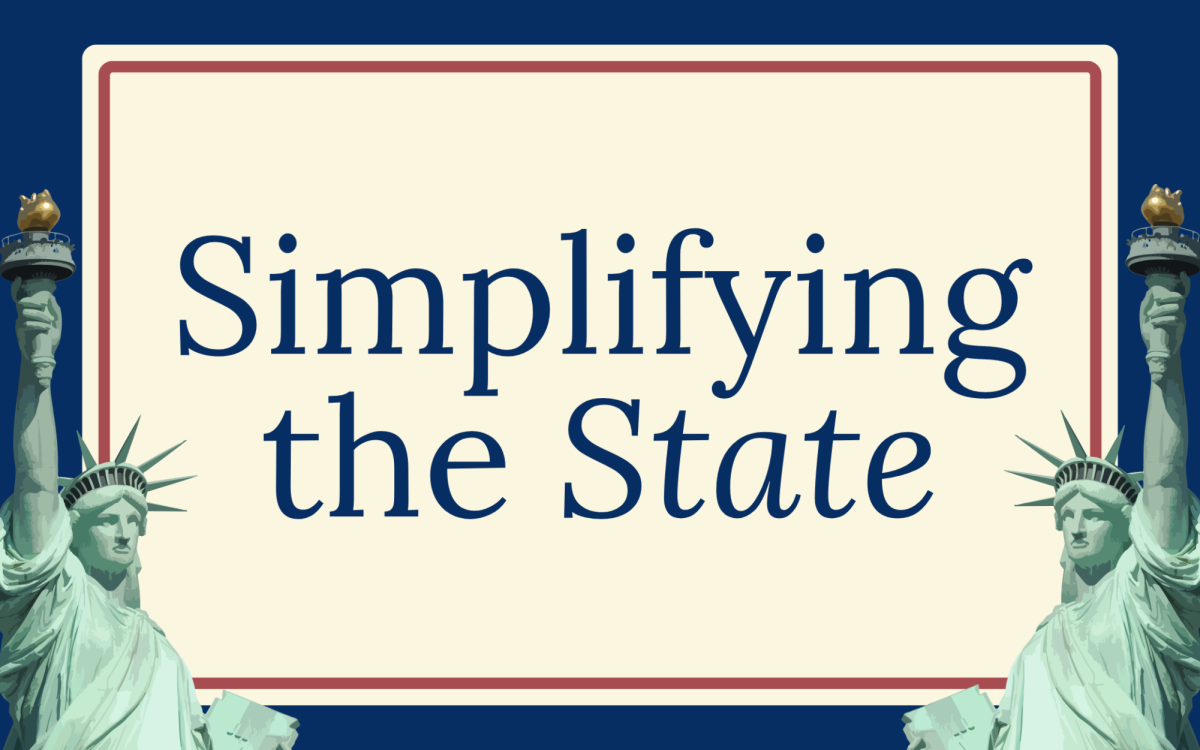This week, in this episode of Simplifying the State, we explore the latest polling data revealing new paths to 270 electoral votes for Trump and Harris and analyze how Biden’s exit reshapes the electoral map.
Adam (00:00.494):
Welcome back to Simplifying the State. I’m Adam Watson, and today we’re breaking down three key factors shaping the 2024 election this week: the DNC’s down-ballot spending initiatives, how the Harris campaign is defining its policy and potential reasons for a Harris or Trump win. Let’s dive right into the DNC’s down-ballot spending.
Nicholas (00:03.512):
I’m Nicholas Perrin.
Adam (00:30.19):
Down-ballot spending is when a national committee, like the DNC or RNC, gives money to various local and state campaigns. Right now, key Senate races for Democrats include Michigan, Wisconsin and Pennsylvania. But two important swing states are Ohio and Montana. While Montana leans red, the DNC is likely hoping to offset a loss there by flipping Texas or Florida, which aren’t as red as you’d think.
The DNC is focusing resources on these races because control of Congress is crucial, whether they win the presidency or not. This week, $20-25 million was reportedly given to the DNC for down-ballot races. Expect to see plenty of ads in these key swing states. Nicholas, do you think these investments could flip states like Texas or Florida if Montana goes Republican?
Nicholas (02:32.32):
It’s possible. As you said, if Montana goes Republican, Democrats will need to flip either Texas or Florida to maintain a 50-50 split. It’s unlikely, but in this political climate, anything could happen.
Adam (02:56.556):
Exactly. Recent polling shows Rick Scott in Florida up by just one point and Ted Cruz in Texas up by only four. Meanwhile, John Tester’s Republican challenger in Montana is ahead by six or seven points. You’re seeing tighter margins in traditionally red states, but flipping them would require significant resources and strategic campaigning.
Now, let’s move on to the Harris campaign strategy. Harris has been deliberate in defining her policy positions, focusing on healthcare, climate change and economic reform. While she’s touched on immigration, economic issues have consistently ranked as voters’ top priority. This week, she emphasized small business tax credits and affordable childcare and healthcare. Nicholas, what do you think about how Harris is positioning herself?
Nicholas (06:01.986):
It seems like Harris is trying to present herself as the more progressive, youth-focused candidate, especially after some young voters expressed disappointment with the Democrats’ stance on issues like Gaza. She’s also distancing herself from Republicans, who aren’t addressing climate change or economic reform as much.
Adam (06:49.006):
Here’s the transcript with the part about the capital gains tax removed:
Adam (00:00.494):
Welcome back to Simplifying the State. I’m Adam Watson, and today we’re breaking down three key factors shaping the 2024 election this week: the DNC’s down-ballot spending initiatives, how the Harris campaign is defining its policy, and potential reasons for a Harris or Trump win. Let’s dive right into the DNC’s down-ballot spending.
Nicholas (00:03.512):
I’m Nicholas Perrin.
Adam (00:30.19):
Down-ballot spending is when a national committee, like the DNC or RNC, gives money to various local and state campaigns. Right now, key Senate races for Democrats include Michigan, Wisconsin and Pennsylvania. But two important swing states are Ohio and Montana. While Montana leans red, the DNC is likely hoping to offset a loss there by flipping Texas or Florida, which aren’t as red as you’d think.
The DNC is focusing resources on these races because control of Congress is crucial, whether they win the presidency or not. This week, $20-25 million was reportedly given to the DNC for down-ballot races. Expect to see plenty of ads in these key swing states. Nicholas, do you think these investments could flip states like Texas or Florida if Montana goes Republican?
Nicholas (02:32.32):
It’s possible. As you said, if Montana goes Republican, Democrats will need to flip either Texas or Florida to maintain a 50-50 split. It’s unlikely, but in this political climate, anything could happen.
Adam (02:56.556):
Exactly. Recent polling shows Rick Scott in Florida up by just one point, and Ted Cruz in Texas up by only four. Meanwhile, John Tester’s Republican challenger in Montana is ahead by six or seven points. You’re seeing tighter margins in traditionally red states, but flipping them would require significant resources and strategic campaigning.
Now, let’s move on to the Harris campaign strategy. Harris has been deliberate in defining her policy positions, focusing on healthcare, climate change and economic reform. While she’s touched on immigration, economic issues have consistently ranked as voters’ top priority. This week, she emphasized small business tax credits and affordable childcare and healthcare. Nicholas, what do you think about how Harris is positioning herself?
Nicholas (06:01.986):
It seems like Harris is trying to present herself as the more progressive, youth-focused candidate, especially after some young voters expressed disappointment with the Democrats’ stance on issues like Gaza. She’s also distancing herself from Republicans, who aren’t addressing climate change or economic reform as much.
Adam (06:49.006):
That’s true. The Harris campaign is definitely crafting its identity, and the upcoming debate is a critical opportunity for her to define her position. While she’s the vice president, many voters don’t know where she stands on many issues, and this debate could be her chance to make a national impression.
Now, let’s talk about the possible outcomes of the election. Nicholas, what do you think are the key factors for a potential Trump win?
Nicholas (09:05.804):
Trump has strong support among rural and conservative voters, particularly older ones. He’s been vocal on the economy and national security, two issues that resonate with his base. He’s also charismatic and effective at rallying people behind him.
Adam (09:53.08):
Right, and you see him focusing on border security, which has been a weak spot for Democrats. That’s something voters are paying attention to this year. Trump’s economic populism, especially with JD Vance, appeals to voters in rural areas. Let’s also touch on the reasons for a possible Harris win.
Harris has strong support in urban areas and among minority groups. She’s focused on key priorities like abortion and economic policies that appeal to women and minorities. Her campaign is well-funded, with close to half a billion dollars on hand, far outpacing Trump in recent fundraising.
She’s also received notable endorsements from figures like Adam Kinzinger, Liz Cheney and even Dick Cheney, which could help her attract moderate Republicans and independents. Both candidates have strong paths to victory, but Harris may have an easier time with certain voter groups.
Adam (12:13.35):
Thank you so much for listening. We’ll be back later this week with a special episode covering the debate and its impacts. Talk to you then.






